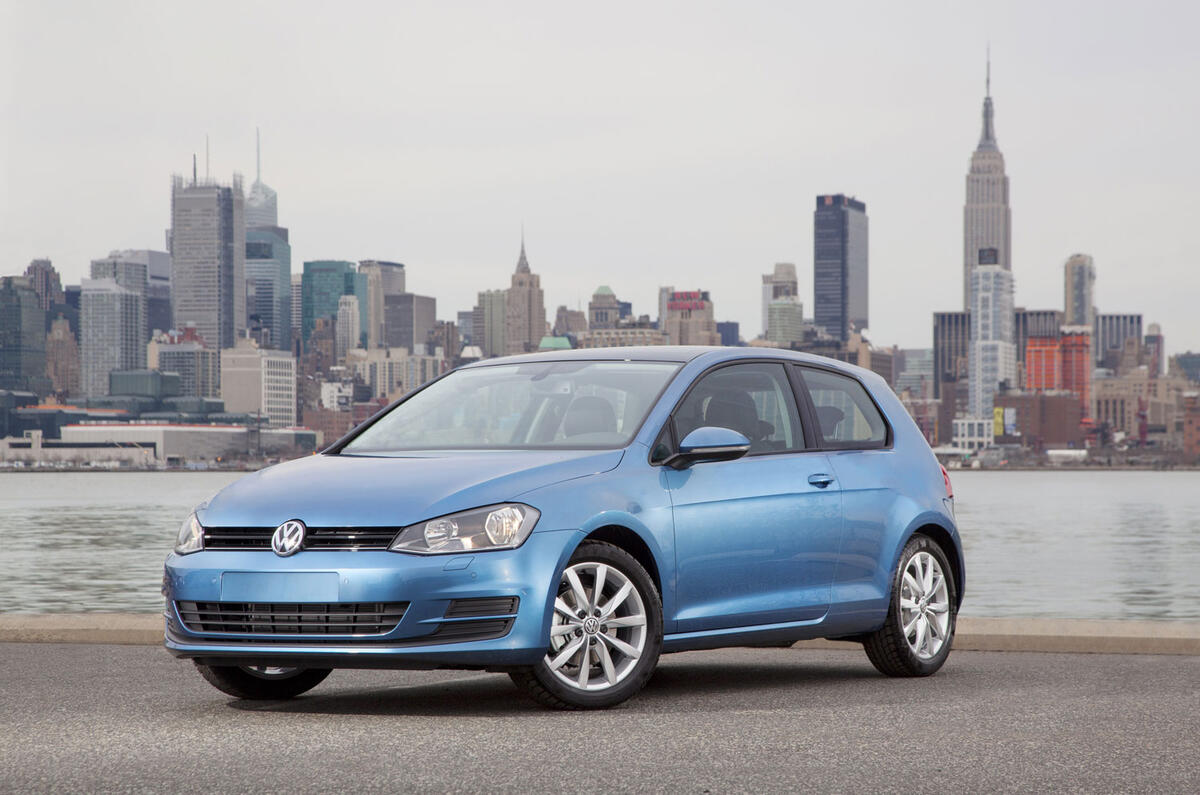A senior Volkswagen engineer has exposed why technical differences between European and US-spec VWs have ensured that one software fix can’t be applied to all emissions-cheating cars.
Speaking in yesterday’s Transport Committee meeting, Oliver Schmidt confirmed that physical differences between the exhaust systems of European and US VWs meant that each region needed its own bespoke recall plan.
He explained that Euro 5-spec diesel VWs in the US feature a more comprehensive filtration system compared with equivalent cars in the EU.
“In Europe, there is no NOx after treatment on the system, you only have an oxidation catalytic filter and a particulate filter,” he said. “So there is nothing that reduces the nitrogen oxide on the Euro 5 engine.
“On a US engine, on older generations you have a lean NOx trap, and on the newer generations you have an SCR selective catalytic reduction system. In the US, the [ECU] software influenced the function of those two systems, but they are not present [in European cars].”
Cars from each region will need their own fix, but VW UK boss Paul Willis confirmed that it wasn’t simply a case of one fix for each side of the Atlantic either.
“In Europe, for 1.2 and 2.0-litre diesels we have a software fix – the fix starts on week nine [of this year]. But for the 1.6-litre diesel engine, there’s a software and hardware change that’ll commence from month nine.”
Audi and Seat deny CO2 cover-up
Schmidt went on to explain that the EA189 1.6-litre diesel engine, which is fitted to 430,000 UK vehicles, will need its flow transformer (which measures the volume of air flow into the engine) changed in order for the software fix to work.
“In the configuration that was brought to production, the onboard computer couldn’t get a proper reading of what was going on, so the actual volume of air was not what we read on the sensor,” he said. “Our new transformer – or flow rectifier as it’s sometimes called – gives you a laminar [smoother] air flow that can be more easily measured.”
This change allows the ECU to accurately inject the correct amount of fuel into the engine, which VW says will improve efficiency.
Schmidt compared the software and hardware fixes with upgrades to smartphones: “What we do on the 1.2 and 2.0-litre is we put new apps on your phone, so we are only changing calibration data. But on the 1.6, we give you a new operating system.”





Join the debate
Add your comment
Technical BS
Europe should simply adopt
typos1 wrote: Europe should
Whilst the US emissions regulations pertaining to diesel cars are more stringent in the USA than European regulations there are big differences throughout the USA.
In the USA the national, federal laws, limits of various emissions are set as a minimum standard throughout the USA. The federal law allows the 50 states to set their own more stringent limits. California has the strictest limits on emissions from cars brought in due to terrible smogs formed from petrol car emissions in the past. The California state government set up a body to set and enforce their limits called CARB, California Air Resourses Board. Several other states have adopted California's stricter limits on emissions for cars.
In the USA the emission limits do not apply to many of the popular trucks, pick ups to us Brits, hence the huge V8 engines although recently diesel engined version are gaining popularity. Indeed JLR has recently started introducing their models in diesel form to all of North America.
There are currently ongoing talks to bring in a worldwide standard covering all aspects of construction and use regulations pertaining to private passenger vehicles. Some US standards are very lax compated to European ones let alone Japanese etc.
Schmidt - yet more lies
pauld101 wrote: “Our new
Who said anything about a mesh????
Mesh
An earlier explanation from VW published in Autocar showed how inserting a mesh prior to the air intake sensor would smooth out the flow enabling the sensor to more accurately measure air flow under all conditions.
At least that was my understanding of the previous article.